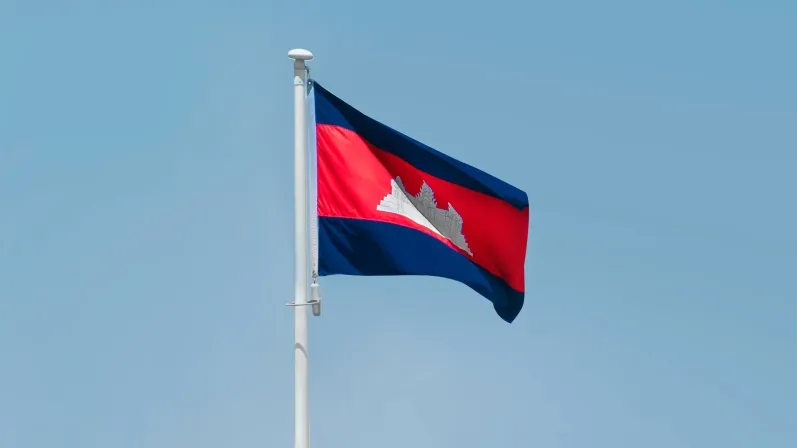
Cambodia’s 18-year energy plan sets ambitious targets for renewables
To attain energy security, Cambodia will have to overcome investment challenges, cut wasteful consumption, and review pricing policies.
Cambodia, a nation saddled with power shortages, has underscored its commitment to energy security through the implementation of its Power Development Masterplan 2022-2040 (PDP) and the National Energy Efficiency Plan (NEEP). Despite this ambitious roadmap, experts caution that the journey towards these objectives may be fraught with challenges as the country must first address technical and investment hurdles.
The PDP is Cambodia’s “first long-term power plan” that provides a roadmap for the country’s energy sector, said Marko Lackovic, managing director and partner at Boston Consulting Group.
“It aims to transition the country towards a cleaner power mix, whilst meeting existing governmental commitments and security, reliability, and affordability of energy supply,” Lackovic told Asian Power.
In one of the scenarios under the PDP, the domestic installed capacity of coal in 2030 will be at 2,266 megawatts (MW) comprising 40.4% of the total mix. The capacity will remain the same in 2040 but its share will be reduced to 21.4% due to the growth in other sectors. The share of fuel oils will be at 490 MW for both 2030 and 2040 but their share in the energy mix will be at 8.7% and 4.6%, respectively.
Its solar power capacity will increase to 3,155 MW in 2040 (29.8%), from 1,005 MW (17.9%) in 2030. Hydropower will be at 1,558 MW (27.7%) in 2030 and increase to 2,973 MW (21.4%) by 2040.
Biomass will grow from 98 MW (1.7%) in 2030 to 198 MW (1.9%) in 2040. Battery Energy Storage Systems will account for 3.6% of the total in 2030 at 200 MW and will increase to 420 MW, comprising 5.8%. Cambodia will not have natural gas in 2030 but it will account for 8.5% in 2040 at 900 MW.
Meanwhile, its imports from Laos and Thailand will be at 3,095 megawatts (MW) and 700 MW, respectively by 2030. By 2040, imports from Laos will be retained but the imports from Thailand will be raised to 1,000 MW. In 2030, it will have around 1,215 MW of capacity saved through energy efficiency measures and it will increase to 2,205 MW in 2040.
“Whilst there has been a fair amount of developments in the market, from the enactment of policies such as the power development plans, regional cooperation, and power project commissioning, we expect that there will be a strong expansion of Cambodia’s power market in the coming years,” said David Thoo, analyst for power and low carbon energy at BMI said.
Cambodia’s energy landscape
The country’s total final energy consumption is expected to double from the 2020 levels to reach 14 million tonnes of oil equivalent (mtoe), according to a report by the ASEAN Centre for Energy (ACE). This will be led by the transport sector (46%), industry (24%), and residential (16%).
At present, the government’s focus appears to be ensuring energy security over the next 10 years before looking at deploying renewables on a larger scale, Thoo said.
He noted that the project pipeline of coal projects in the Southeast Asian nation is around 3.5 gigawatts (GW), the largest of all power types. The amount of hydro, solar and wind power projects is about 530 MW.
“Cambodia has quite a challenging task ahead of balancing both reducing emissions, and also ensuring energy security as its economy expands, and its power consumption grows,” Thoo said.
The PDP estimates the country would need around $9.2b of investment to support the expansion of its generation capacity. Of which around $2.5b has been committed for projects under development from 2022 to 2025.
For 2026–2031, investments were expected to be low because of the full uptake of the scheduled power imports from Laos and progress in its energy efficiency initiative. But for 2032 onwards, Cambodia would need the remaining around $6.7b to fund hydrodams, solar plants, and battery energy storage systems projects.
“This is actually an indication that Cambodia is looking to attract more investment into its power sector,” said Thoo. “We expect this to be one of the key features that [we] could see happening in the coming years as the government becomes more open to foreign investments.”
Banking on energy efficiency
In a bid to establish sector-specific energy efficiency policies, Cambodia has instituted the NEEP. This strategic policy aims to curtail total energy consumption by a minimum of 19% by 2030, in contrast to a business-as-usual scenario.
Per sector, the government aims to reduce residential consumption residential by 34%, industrial by 20%, and transport by 5%, according to the ACE report.
Also, the report underscored how the policy needs to be supported by an increase in awareness among residential consumers on the benefits of shifting from traditional biomass to modern energy sources. This sector is a priority for the government as it accounts for over half of the total energy consumption.
Through this effort, the programmes under the policy can be implemented efficiently. “Moreover, the potential linkage of upscaling investment on energy efficiency with the one for the energy supply side must also be explored. Thus, it could reduce costs and improve coordination among relevant stakeholders involved in both PDP and NEEP,” it said in the report.
Challenges
Phoumin Han, senior energy economist at the Economic Research Institute for ASEAN and East Asia, said that whilst the goals under the PDP are “good news,” particularly the significant increase in solar power, deploying them faces policy and power purchase agreement risks such as curtailment issues.
Han said meeting the demand would be easy, but guaranteeing an affordable electricity cost, may not be guaranteed.
“If you keep building new power plants in a way exceeding the demand, the public will bear the cost through higher tariffs. It is very costly if it is not planned carefully,” he told Asian Power.
Han added that there is also a need to upgrade the grid through the introduction of a smart grid as it will help save energy costs and reduce the reserved capacity. He warned that a weak transmission and distribution system could result in a high reserved capacity.
According to the ACE report, Cambodia is also facing challenges on the technical side, particularly in water storage management. It noted that the country had a 400-MW electricity shortage during the dry season, resulting in uncertainty in the future of hydropower.
The report also noted that the development of hydropower projects in the Mekong River contributed to water security issues as the dam is not used to prevent floods, inundating lower ground when water needs to be released from the dam.
“Low resiliency to natural disasters and climate change effects impeded the government’s implementation of the PDP,” the report read.
Driving investments
Cambodia may face challenges in securing green funding to boost its local generation capacity and high-voltage network infrastructure beyond 2025 as it continues to be reliant on coal power plants, Lackovic said, noting the country’s 2040 target. It also has no plans for early retirement of coal plants.
Ambiyah Abdullah, senior office of the Energy Modelling and Policy Planning Department at ACE, said the private sector will play a crucial role in Cambodia’s energy security as the current government policy allows their involvement.
“The private sector involvement is really crucial because we need a lot of means, a lot of investments. There is really a need for the share or the contribution from the private sector investment at this moment,” she said.
The ACE Policy Brief noted a “weak state utility or low capacity of the government to intervene in Cambodia’s electricity system” as the current policies support private sector involvement.
Whilst the support for the private sector is “appropriate” due to the limited capacity of the government, this is elevating tariff rates and resulting in private electricity providers levying higher electricity charges.
“Consequently, the ability of the government to implement rational economic and poverty relief policies is hindered by a privatised system in Cambodia with many small private actors,” the report read.
“The upscaling investment is needed to secure the required investment for the power sector and improve technical capacities for power generation, and institutional reform stated in the previous section. Thus, the government design of the institutional framework and financial plan on the energy supply side would be the key factors to complement the PDP,” it added.
Affordable electricity rates
According to the ACE report, Cambodia needs to re-evaluate its electricity tariff structure to provide a “more comprehensive access and affordable electricity price,” particularly for residential users.
The agency said that several tariff structures in the markets have created a wide gap between the rural and urban areas. The prices – ranging from $0.18 to $0.18 per kilowatt-hour (kWh) – are also higher compared with neighbouring countries.
To illustrate the disparity, the cost of electricity in Thailand and Indonesia is considerably lower, with tariffs as low as $0.07 to $0.10 per kWh.
“Subsequently, rural areas either lack service or have limited access to power since they cannot afford electricity. Despite various tariff structures, EDC’s mandate is weak and favours poor tariff policies as the implementing agency in power sectors,” the ACE report read.
In Cambodia, there are 245 villages or only 1.73% of the total villages, that have not yet been reached by power distribution networks, it added.
Overcoming barriers
Han said the Cambodian government has to craft policies that will attract investments in renewables to ensure that the risks, such as on the policy side, can be managed.
“In addition, policy support and overall cost of renewables need to be understood. Fiscal incentives must be clearly stated to support the overall cost of renewables and some specific policies to ensure the increase of return from investments need to be in place, such as feed-in-tariff or others, he said.
Achieving energy security will be difficult and depend on the political environment, Han said.
Han believes that even if Cambodia relies on imported natural gas and coal for electricity, the country can still achieve energy security as the majority of its electricity will be produced domestically.
“To achieve full energy security, Cambodia may need to develop large scale of solar PV with battery storage combined with hydropower, biomass, wind and some other indigenous fuels,” he said.
Lackovic said one approach the Cambodian government can pursue is implementing additional incentives to promote rooftop solar and distribution generation, particularly for the remaining 245 unconnected villages. This can help cut the government’s investment requirement average cost of electricity.
Rolling out measures that reduce peak demand such as demand response programmes and grid-connected energy storage systems can also reduce the need for additional generation capacity needed whilst maintaining a high reliability.
Abdullah also said that other member states of the region will play an important role in contributing to Cambodia’s energy security, citing the ASEAN power grid connection which will connect the country to Thailand, and Singapore, amongst others.
“There will be a significant increase of the energy demand among the ASEAN and maybe each ASEAN member state can empower the national capacity to meet the demand,” she said, adding that the regional cooperation will also secure energy supply.
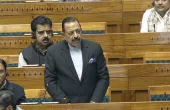
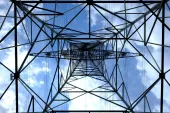
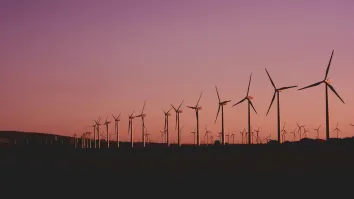
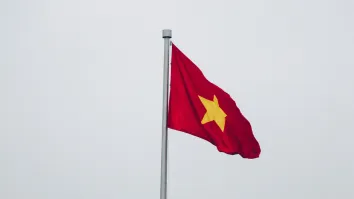
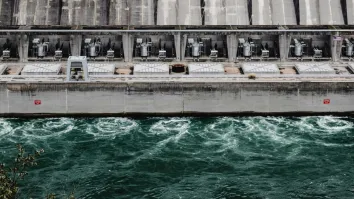
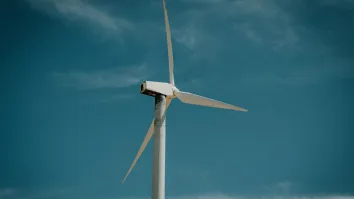













 Advertise
Advertise






